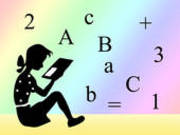Shells of Remediation
Shells of Reading Remediation
Struggling or apathetic readers can be helped through remediation. Reading strategies can help with the remediation. For example, students can be taught to look at titles and headings in books as they preview before they read. Also they should be taught to pay attention to any captions or pictures or graphs that they see, in addition to any words that are in italics in text.
English language learners learn best through pictures. Provide such students with culturally sensitive visuals and graphic organizers. Try to learn their language when helping them with their reading if possible, or make books available that are bilingual. Bilingual dictionaries, too, are a must and will prove to be invaluable to meet your needs in the classroom.
When developing IEPs for students with special needs devise a literacy plan that will look at long as well as short-term reading and writing goals of your student. Make sure that those goals are reachable, realistic and obtainable. This will help build the confidence and self-esteem your student needs.
Teaching Students to Think Outside the Box is a critical skill that will teach students to have more confidence with their reading and with any of their learning that they will confront.
Students should be taught to question the author as well as the text when they are reading. Teach students to think outside of the box by showing them how to ask questions and how to think for themselves.
Base remediation plans on sound research and proven reading strategies. Look at the student needs a capabilities and differentiate instruction. Also consider the individual learning styles of your students. For visual learners provide plenty of graphs, charts, pictures and graphic organizers. Those who learn auditorially or orally will do well with books on tape, dictation and other spoken activities involved in their reading plans. For kinesetic learners offer typing, writing and other activities that will suit such students. Often students will possess and do well with a variety of reading styles. Keep this in mind when conducting lesson plans for the literacy needs of your student who is struggling with or is apathetic or reluctant toward reading.

